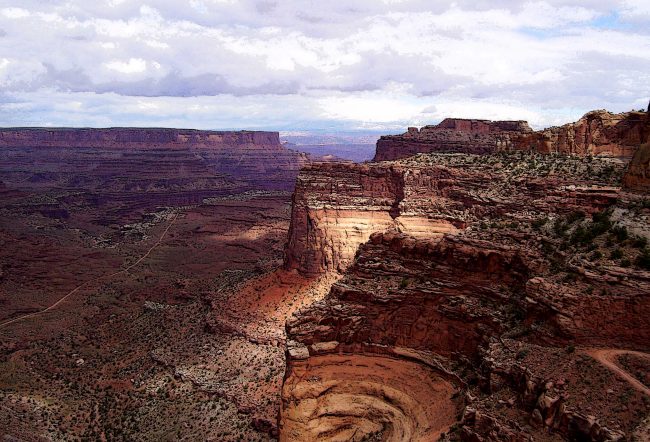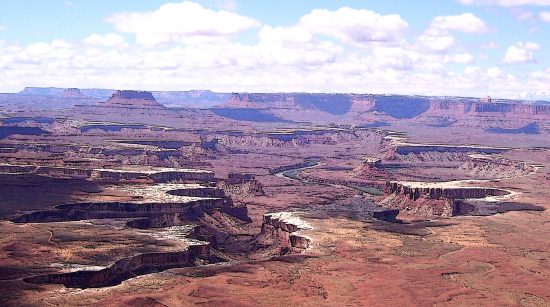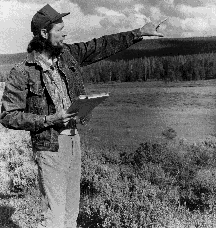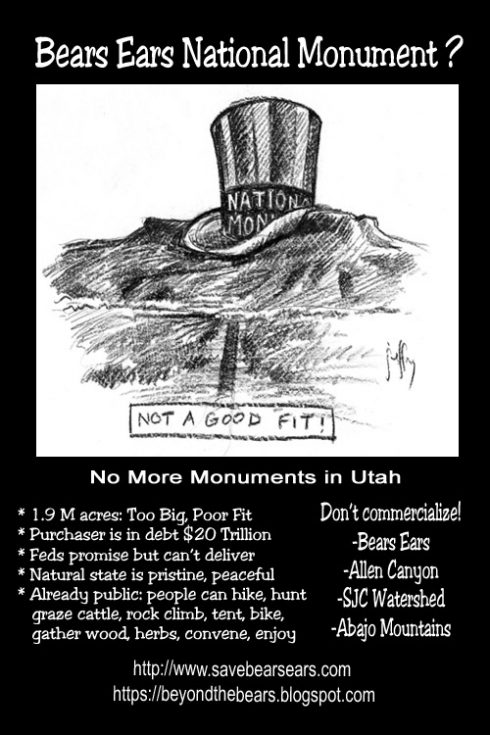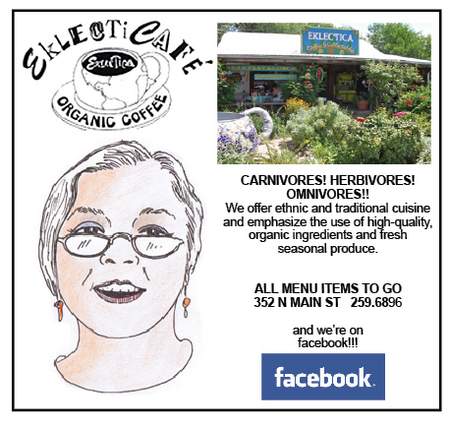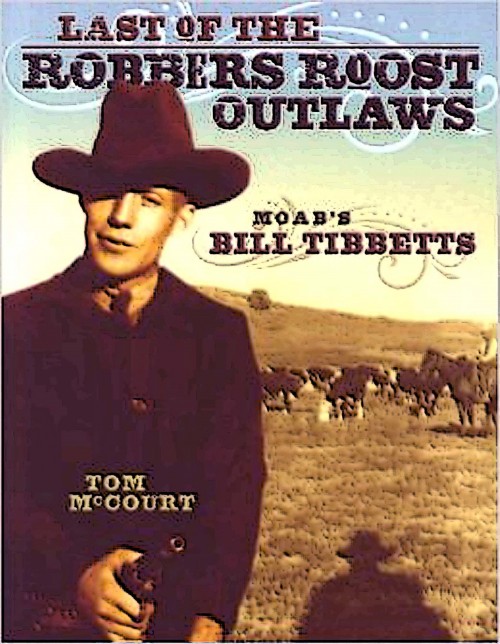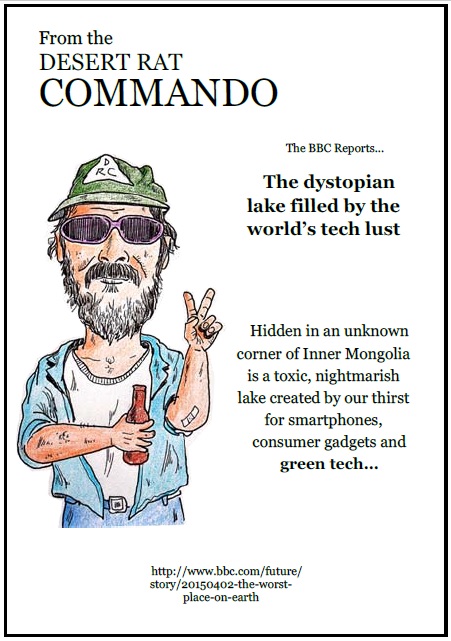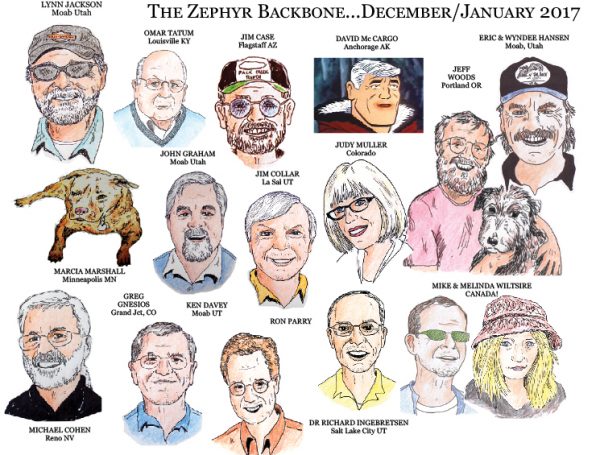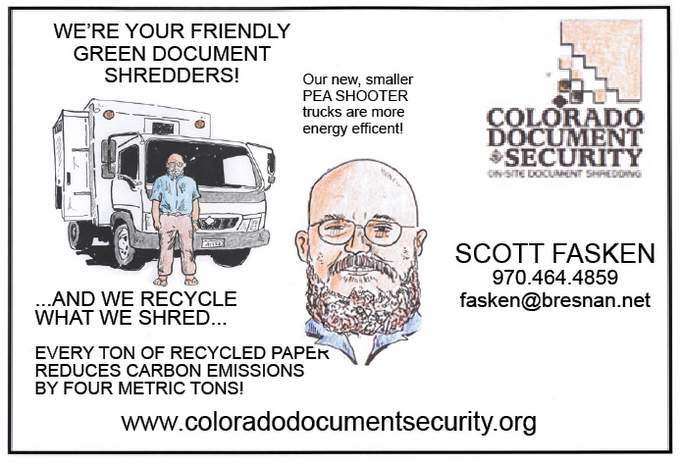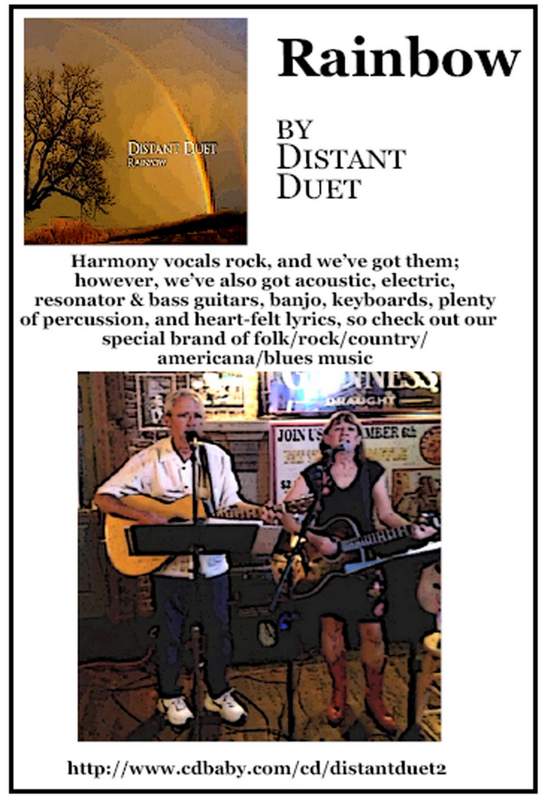(From the 2001 Zephyr Archives)
The Debate on Wilderness Designation Moves into a New Century and Opinions Still Vary, Even Among Environmentalists
Liz Thomas: Southern Utah Wilderness Alliance
Why Protect All That is Left?
Huge amounts of wilderness have been lost across America. Four hundred years ago most of the eastern United States was covered with deciduous forests, thick, towering stands of countless species.
Virtually none of these original forests remain today. Two hundred years ago, tall grass prairies spanned the plains from one horizon to the other, supporting huge herds of buffalo. Most of these native prairies are gone, as are the species that depended upon them. Only 150 years ago, majestic and ancient redwood forests were commonplace in the western band of states. Today, these cathedral-like redwood forests exist only in small islands of protected lands, 5% of their original number. As recently as 50 years ago, one could float 200 miles down the wild Colorado River from Moab to Lees Ferry, scarcely seeing anything connected with our growing civilization. Today, half of the river and its canyons are under Lake Powell. The point: in just a few generations, a large majority of America’s wilderness has been lost.
Despite these huge and tragic losses, however, there is still some incredible wilderness out there that has not been tarnished by our propensity to construct, control, and manipulate nature. There are still places in the Escalante where the only footprints are from lizards and the only lights at night are the incredibly bright stars hanging in the darkest of night skies. There are places in the West Desert where one can gaze out over hundreds of miles at mountain ranges draped in Van Gogh colors and hear only the wind. And there are still slickrock canyons where the cackle of the prospecting raven or the whisper of the owl’s stealth flight at night is the only ruckus.
Granted, we used to have a whole lot more, but the wild and spectacular places that we’ve got left in Utah are pretty damn good and it’s well worth making a concerted and wholehearted effort to protect them from further “progress.”
Protect the Status Quo
Over the past 150 years we have lost nearly two-thirds of Utah’s wilderness to development and other human folly. In light of these incredible losses—the drowning of Glen Canyon, and the general exploitation of 13 million out of the 22 million acres of Utah BLM lands—the most reasonable and responsible thing to do at this juncture is to protect all the remaining wilderness. Nothing radical, just protect the status quo.
Comprehensive protection of all the remaining wilderness in Utah would still allow the continued exploitation of coal, oil and gas, and other mineral resources in places where the wilderness has already been invaded. As Wallace Stegner wrote, such a proposal would leave “maximum wilderness intact for the future, guaranteeing Utah, America, and the planet something incomparable and increasingly precious.
We Don’t Have the Right to Compromise
As indicated above, the most even-handed approach is to protect all wilderness before it is unwittingly violated like so much before it. Other strategies and opinions, however, have been suggested.
–Compromise. In many situations, the middle ground is often the most wise and prudent solution. Striking a compromise in order to maintain a working or personal relationship is often necessary and sensible. In other situations, however, compromise is not the best solution. For example, in the civil rights movement, would there have been justice in a compromise giving African-Americans only 50% of 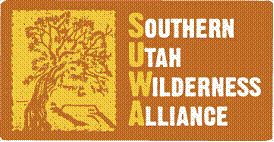 the rights enjoyed by white Americans, or by giving Rosa Parks a seat halfway to the front of the bus? No. The movement’s determination to continue efforts to guarantee equal rights for all, without making significant compromises, was the only right thing to do.
the rights enjoyed by white Americans, or by giving Rosa Parks a seat halfway to the front of the bus? No. The movement’s determination to continue efforts to guarantee equal rights for all, without making significant compromises, was the only right thing to do.
Likewise, the idea of protecting only some of the wild places that still exist and sacrificing others is not the right thing to do. The wilderness pie has ALREADY been divided and compromised, with more than half of it already eaten up by development and non-wilderness uses. What remains as wilderness should not be sacrificed for more shortsighted uses.
–Work together with the anti-wilderness community. Objections to wilderness in Utah come from a relatively small faction of people. These voices range from money-hungry industry motivated solely by big profits with little regard for the land or its inhabitants, to county commissioners who advocate zero wilderness, from city-dwelling gear-heads who think they have the right to drive vehicles indiscriminately across all public lands, to sagebrush rebels who’ve always had a burr in their saddle against the federal government managing public lands. Some folks develop an attitude that the land is theirs for the taking, to use however they want. Unfortunately, this attitude creates misunderstanding and causes animosity towards public lands wilderness. Management of public lands has always rested with the federal government, not with individuals, counties, or states. Wilderness designation does not change this. Federal management ensures that these public lands are managed for the benefit of ALL Americans and not just for the benefit of local interests.
No matter how loud the anti-wilderness faction may yell, they remain a very small minority compared to the number of citizens nationwide who overwhelmingly support protecting all that is left. National and statewide polls confirm that people want their public lands to remain undeveloped and natural. And even though not everyone wants to acknowledge it, Utah’s public lands belong to all of the nation’s citizens, not just the few who are fortunate to live among these magnificent landscapes.
–Exclude some wilderness lands. There have been suggestions that the current wilderness proposal for Utah BLM lands contains lands that are not true wilderness. Although Utah’s congressional delegates have suggested that parts of this proposal don’t qualify as wilderness, no one has ever followed through on this claim and identified any particular place that does not meet wilderness criteria.
Every place that is included in the citizens’ wilderness proposal has been field-checked and reviewed by experts that have worked on public lands wilderness issues for many years. BLM has reviewed about two-thirds of the wilderness proposal and have by and large concurred with the wilderness determinations. There is every reason to believe that the agency will agree with the remaining portions upon review.
–Pass a bill, any bill. Some have suggested that it might be better to try to pass small, piecemeal wilderness bills. The arguments put forth for this type of approach are: 1) passing several small wilderness bills is ultimately the most practical way to protect wilderness, and /or 2) it’s better to pass small wilderness bills right away (rather than a comprehensive bill sometime down the road) in order to prevent the ongoing loss of wilderness.
We don’t buy either one of these arguments. With respect to #1—Look at who is proposing the little, inadequate wilderness bills: Rep. Jim Hansen, Utah’s self-professed anti-wilderness congressman. His wilderness proposals exclude areas that are at high risk for mineral development or out-of-control ORV abuse; they provide wilderness protection where it is least needed. The purpose behind this type of bill is to rob the wilderness movement of its momentum and to triumphantly claim that the wilderness issue in Utah has been settled once and for all, making additional wilderness bills all but impossible.
Although a comprehensive, regional wilderness bill that protects all the wilderness within a distinct and significant geographic area might warrant serious consideration, the “regional” bills proposed thus far by the Utah delegation fall far short. For instance, the recent West Desert bill excluded more than half of the wilderness lands in Utah’s West Desert; similarly, the recent San Rafael Swell bill would have designated zero wilderness within the bill’s geographic boundaries.
With respect to #2—Wild places are indeed being nibbled away. But these losses, while significant, are small compared to what would be lost through a failed political strategy. The first version of America’s Redrock Wilderness Act was completed in the mid-1980’s. When this proposal was revised and completed 12 years later, less than 3% had to be dropped because of encroaching development. This impressive record required coordinated and strenuous efforts on the part of SUWA, other environmental groups, and importantly, thousands of passionate volunteer activists. Working together, we fight like hell to keep from losing any of it. When we do lose something, we fight harder the next time.
Can a Good Wilderness Bill Get Passed?
The citizens’ proposal for Utah wilderness, formally known as America’s Redrock Wilderness Act, continues to gain sponsorship in the U.S. House of Representatives and the U.S. Senate. With overwhelming support from moderate Republican legislators, the bill’s chances for eventual passage are good. Consider these analogies: clean indoor air laws; civil rights; women’s rights. All were long, hard-fought struggles. All ended in clear victories, but the exact dates of these victories were not predictable in advance. Yet in all of these cases, fundamental forces favored the winning side, so it could have been (and was) predicted in advance that eventual victory was likely.
It is understandable that those who have worked long and hard on the wilderness issue would want a final resolution or significant accomplishment to feel good about. But the wilderness dispute isn’t about personal accomplishments or touchy-feely compromises. As Brant Calkin, a preeminent defender of Utah wilderness, has reminded us before, “Those of us in the environmental movement don’t have the right to be impatient just because we’ve worked long and hard.” The goal for wilderness advocates is to protect as much of this spectacular country for the enjoyment of future generations, and for the myriad life forms that depend on it. If waiting five years or more to pass a good comprehensive wilderness bill means getting millions more acres of wilderness protected, then we just have to be patient, buckle down, and work hard to protect these lands in the interim. What’s important is to hold all the pieces together while support for the whole continues to grow.
Liz Thomas is SUWA’s field representative in Cedar City, Utah
Dick Carter: High Uintas Preservation Council
With deep trepidation I enter this debate again, from the sidelines, but with a history that goes back to proverbial “day 1” of the BLM Wilderness Review. I was in Washington, D.C., working with The Wilderness Society (TWS) in 1976 when the Federal Land Management Policy Act (FLMPA) was in the final stages of debate in Congress. I was on a sort of job training as a Resource Policy Analyst, having no idea what that meant, really biding my time to come back to Utah and be the Utah Regional Representative for TWS.
I remember testifying at the first FLPMA Oversight Hearing in Reno, Nevada—I think it was the summer of 1977 (summer, I know, because I flew the old stuffy vomit comet from SLC to Wendover, down to Ely, up to Elko, Wells; you get the picture.) I testified in support of Section 603, the Wilderness Review section of FLPMA, and how questionably BLM was starting the wilderness review process. Then I flew the comet back to SLC.
A little later we organized the Utah Wilderness Association (UWA) in 1979 when The Wilderness Society fired me for refusing to move back to Washington, D.C. for an extended period of time. We were right in the middle of the BLM Wilderness Review, which, then and now, seemed more important. In 1980-81 UWA organized and filed the first of two appeals before the Interior Board of Land Appeals (UWA et al.) which resulted in decisive victories for environmentalists and set forth a deep suspicion that BLM, in the earliest days of the BLM wilderness review, simply refused to take wilderness seriously. This fear defined the initial dance between conservationists and BLM.
But there is even more to this appeal. In its earliest stages some of the national conservation groups feared the appeal, national in scope, should not be in the hands of a statewide organization like the Utah Wilderness Association. While they eventually joined with us on the appeal, it defined a bit of discord between conservationists.
This played itself out in the passage of the Utah Wilderness Act of 1984 and has become a sort of regular affair among conservationists—not just in Utah. It has all sorts of thematic variations and often becomes personal because of the effort, passion and deep importance of preserving wilderness.
This came into sharper focus and much more controversy when the fledgling Southern Utah Wilderness Alliance (SUWA) and Utah Wilderness Coalition (UWC), the established Utah Wilderness Assocation, the Sierra Club, The Wilderness Society, and a host of other groups and local conservationists met in 1985 to construct a statewide and uniform BLM wilderness proposal. After a few heated meetings in the Law Library at the University of Utah, a few tears and lots of anger, conservationists exited those meetings with no uniform proposal. UWA proposed some 3.8 million acres; many months later, and continuing today, UWC has proposed anywhere from 5.1 million acres to the current number.
It is important to interject here that UWA went into hibernation in 1996 and I organized the High Uintas Preservation Council, which is what I do today. I do not speak for the hibernating UWA but am able to recount this history, of course. UWA had just come from what it saw as a meaningful, but not completely successful engagement with local officials that resulted in the Utah Wilderness Act. Some of the other groups involved were not as supportive of the Utah Wilderness Act, making it clear how the BLM Wilderness Review would be perceived. UWA saw the BLM wilderness process as a step at a time, painful and slow, but pragmatic, in the tradition of the 1964 Wilderness Act and wilderness legislation since. We doubted then and I still doubt Utah will initiate a new legislative paradigm.
While UWA saw this wilderness process as a national issue, we accepted the old tried and true adage that “all politics is local.” We felt local officials were crucial, but not the final word, to what happens to wilderness in Utah—historically, wilderness designation has followed that logic. We also felt the success of the Utah Wilderness Act, even with its shortcomings (and to this date no wilderness legislation has overcome the problem of shortcomings) suggested that a large and meaningful, ecological-based BLM wilderness proposal was possible, building on the measured approach in 1984. We, of course, knew there was much more undeveloped land out there but were also confident that we could hold our own in a long-term debate over wildlands—something that history also suggests. This resulted in the idea of breaking BLM wilderness into regions and pushing for regional legislation over a longer time frame.
We also didn’t have a deep level of faith that all we had to do was wait out the bad politicians, in Utah and elsewhere, and wait for a good President and Congress to unilaterally and smoothly advance our wilderness philosophy into legislation. There may have been such blips on promise in American politics, but in the mid-1980s that didn’t seem very hopeful for decades to come.
But some other conservation organizations differed on just about every point, particularly that there was any merit in dealing with local officials and probably Utah upper echelon politicos…‘and enough has already been compromised, no more!’ Congressperson Owens came and went. Congressperson Shepherd came and went. Some local officials were willing to talk (notably Emery County) but most learned the art of refusal by adopting the strategy that conservationists wouldn’t talk, weren’t trustworthy, ‘there had already been too much compromise, no more,’ and that eventually the right Congress, President and Secretary of Interior will halt this wilderness stuff somewhere down the line.
Two parallel lines of thinking, not exactly deep strategy, in a strange way almost identical, and they cannot converge. So how will BLM wilderness ever be solved with a bit of integrity, ecological integrity, and some dignity? Ironically, there is consensus–‘let Congress try to do it, good or bad, and we’ll just keep stopping it.’ That’s an easier task than getting something through Congress. Certainly Utah’s local rural officials have willingly dropped the ball, preferring the art of refusal. They have nothing to be proud of now, though at one time there seemed a bit of hope. It is often a cultural issue, seldom is it economic, and they, like many folks, are confused by the changing context of wilderness—from that of a recreational issue to a much deeper ecological issue. Governor Leavitt failed the leadership role—too complicated, too controversial, too much work and political capital involved. Outside of newly elected Congressman Matheson, who simply hasn’t had time to really weigh in on this issue, the rest of the delegation sits in this boat as well—usually a bit more vitriolic, particularly where Congressmen Hansen and Cannon are concerned.
This raises the question: is there an alternative to this protracted and predictably bloody political struggle over BLM wilderness? The automatic answer from both sides has been a loud NO. What is so attractive about this no-holds-barred fight? It does little or nothing to educate and alter the fundamental problems surrounding resource management—that of always looking at natural resources as something to be consumed.
This supposed wilderness debate has become nothing but a justification of positions. Both sides seek coercion. Neither side appears to have an interest in setting in motion the personal and cultural changes that must occur if wilderness is to have any value.
So long as BLM wilderness is pursued as the final statement on environmental quality, Right vs. Wrong, Purity vs. Impurity, we guarantee islands of wilderness surrounded by masses of development.
If we can’t solve wilderness issues with some degree of consensus, success, respect, dignity, then the other larger issues we are facing will not be solved either. We treat wilderness as an end even though we know that after its designation, wildlife is still threatened, watersheds are still hammered by too many cattle and sheep and hillsides denuded by off-road vehicles. That is because some of the most critical watersheds, some of the most crucial wildlife habitat, and some of the most sensitive ecosystems don’t even qualify as wilderness.
If we are to achieve fundamental change in our collective view of the land, we must recognize that it is not an “us versus them” matter. It should be obvious by now that coercing others to alter their value system doesn’t work.
I realize this sounds like lofty talk when the opponents of wilderness and environmental integrity continue on with, ‘no, no, no’ ad nauseam. But this isn’t a matter of who will blink first. We are way past that. Collectively we seem to have said, ‘we will wait until somebody does it for us.’
Some 25 years ago the BLM wilderness process was set in motion, yet both sides still can only claim a hollow victory of having stopped BLM wilderness.
Dick Carter founded the High Uintas Preservation Council and has been active in Utah environmental issues for more than 30 years.

